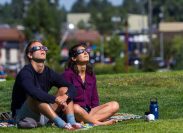13 Fascinating Historical Photos We Wish Our Teachers Showed Us in School
These pictures tell a thousand words.

From the photo of Neil Armstrong taking his first steps on the moon to the image of a sailor's steamy Times Square kiss celebrating the end of World War II, some visuals from U.S. history are seared in our memory. But for each image found in our textbooks, there are countless others that remain unseen and unstudied. To give these photos the recognition they deserve, we've rounded up 13 incredible historical images that should definitely be shown in school.
1
This photo of the Statue of Liberty being built in the late 1800s
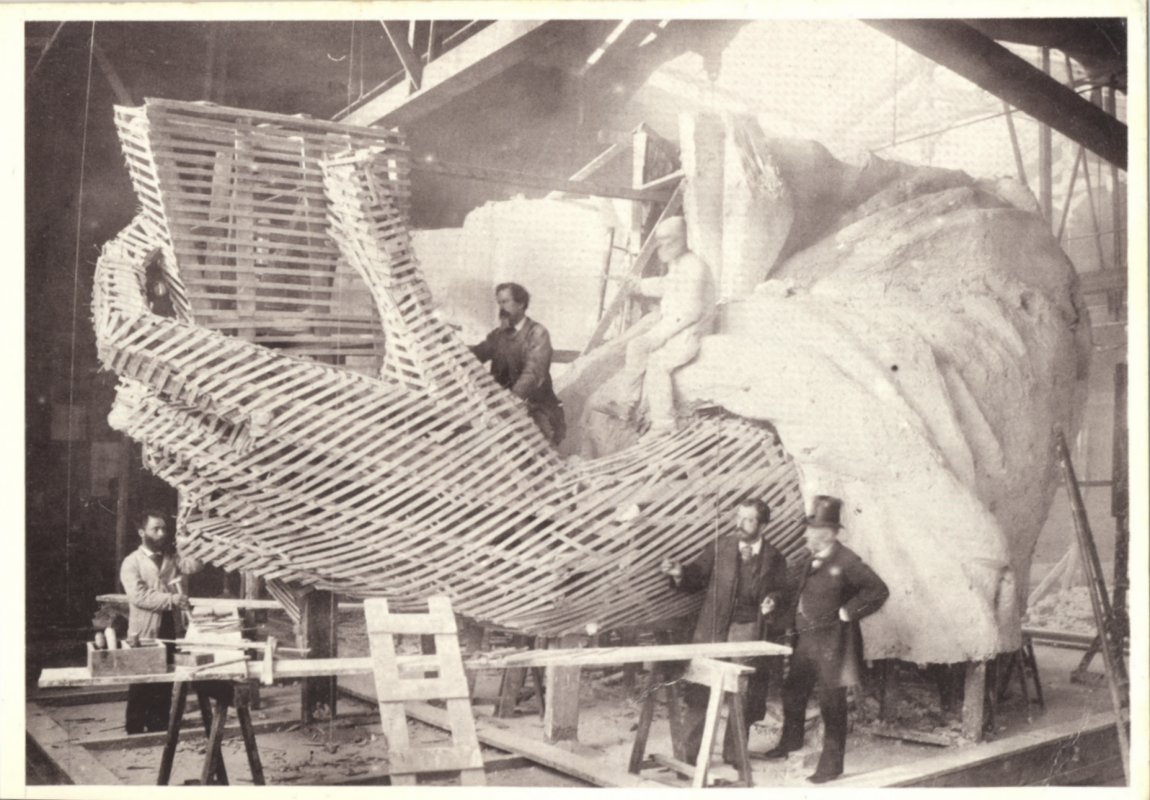
This incredible 19th-century behind-the-scenes photo depicts the construction of the Statue of Liberty, a beacon of freedom and acceptance, and the landmark many immigrants viewed upon first entering New York harbor. Officially known as Liberty Enlightening the World, the statue's designer, Frédéric Auguste Bartholdi; structural engineer, Alexandre Gustave Eiffel; and many craftsmen began work on the project in Paris in 1876.
In May of that same year, the completed arm and torch were taken to the Centennial Exposition in Philadelphia, creating a buzz of excitement for the eventual receipt of the gift. Once completed in 1884, the statue was disassembled and shipped to the U.S., where it was reassembled by a construction crew that included many immigrants.
2
This photo of Nikola Tesla's alternating current at the end of the 19th century

Nikola Tesla is the visionary engineer and inventor responsible for finding a way to harness alternating wireless current for use. A poor immigrant who arrived in the U.S. in 1884, Tesla would find work with Thomas Edison, but the men's differing views (Edison believed direct current was superior to Tesla's alternating current) soon ended that arrangement.
With a string of successes, Tesla opened his own laboratory to continue his experimentation. In 1891, he invented the Tesla Coil, which is widely used in radios and television sets. A man with a flair for the dramatic, Tesla created this stunning image of himself and a Tesla Coil in his laboratory using a double exposure, according to Smithsonian magazine.
3
This photo of the Wright Brothers' first flight at the turn of the 20th century
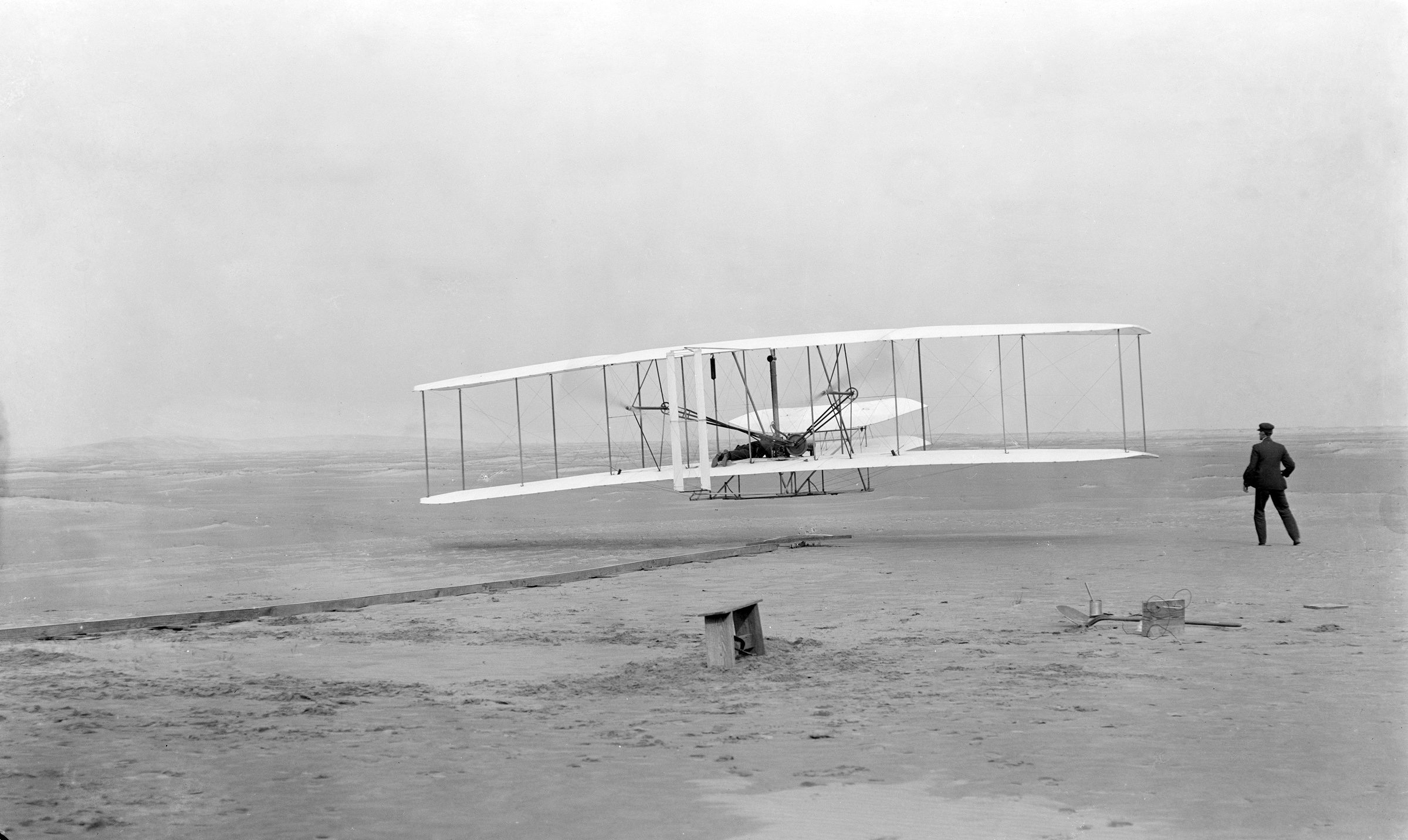
Following the success of their Wright Glider in 1902, the Wilbur and Orville Wright were determined to take air travel one step further and create a motorized aircraft. In December of 1903, they accomplished their goal by conquering the "creation of a propulsion system," according to the Smithsonian National Air and Space Museum.
The Wright Brothers took their Wright Flyer aircraft to Kitty Hawk, the North Carolina beach town next to the one where they'd completed 1,000 successful runs with their glider. After a few false starts, they historically lifted the craft into the air four times, as pictured here. It was a much more simplistic precursor to the sophisticated air travel we're accustomed to today.
4
This photo of a crowd awaiting Titanic survivors in 1912

Following the tragic sinking of the Titanic on April 14, 1912, the 706 survivors (out of 2,200 on board) were picked up by the Carpathia. As the rescuing ship made its way to New York, it dispatched radio messages to spread news of the tragedy—and so began the worry and panic of the loved ones of those who had been on board.
Many family members immediately headed to White Star Line's office in New York harbor. They were hoping the ship's parent company would have information on survivors. It's estimated that by the time the Carpathia pulled into Pier 54, thousands of people were anxiously waiting for it in the rain. The tension and impatience in this rarely seen image can certainly be felt, along with the heartbreak of knowing the terrible news many of these people would soon receive.
5
This photo of World War I troops returning home in the 1910s

When America entered World War I in 1917, Hoboken, New Jersey, served as a major port through which more than 2 million troops would pass over the course of the conflict. The port was so central to the journey of servicemen that, "'Heaven, Hell, or Hoboken' became a slogan for troops hoping for a safe return home," according to the Hoboken Historical Museum. A year and a half later, following the official end of the war, ships pulled back into Hoboken filled with both those fortunate enough to celebrate the victory (pictured here), as well as the caskets of fallen soldiers arriving at their final resting place.
6
This photo of child laborers during the Industrial Revolution

It's hard to imagine today, but child laborers were both accepted and sought after during the Industrial Revolution. Children were cheap labor for employers, who could force them to work long hours in dangerous conditions. For struggling families, this additional income was often vital to their survival. Although reformers and labor organizers sought to improve conditions, it was no small task.
Instrumental to their efforts was Lewis Hine, a freelance photographer for the National Child Labor Committee. Traveling around the country, Hine would gain access to the children at factories and coal mines under the pretense of being "an industrial photographer" looking "to record machinery," according to the International Photography Hall of Fame. He'd then record information such as the child's age and job and photograph them. These devastating portraits helped pressure the U.S. government to make labor reform laws eventually passed in 1924.
7
This photo of Jesse Owens at the 1936 Olympics
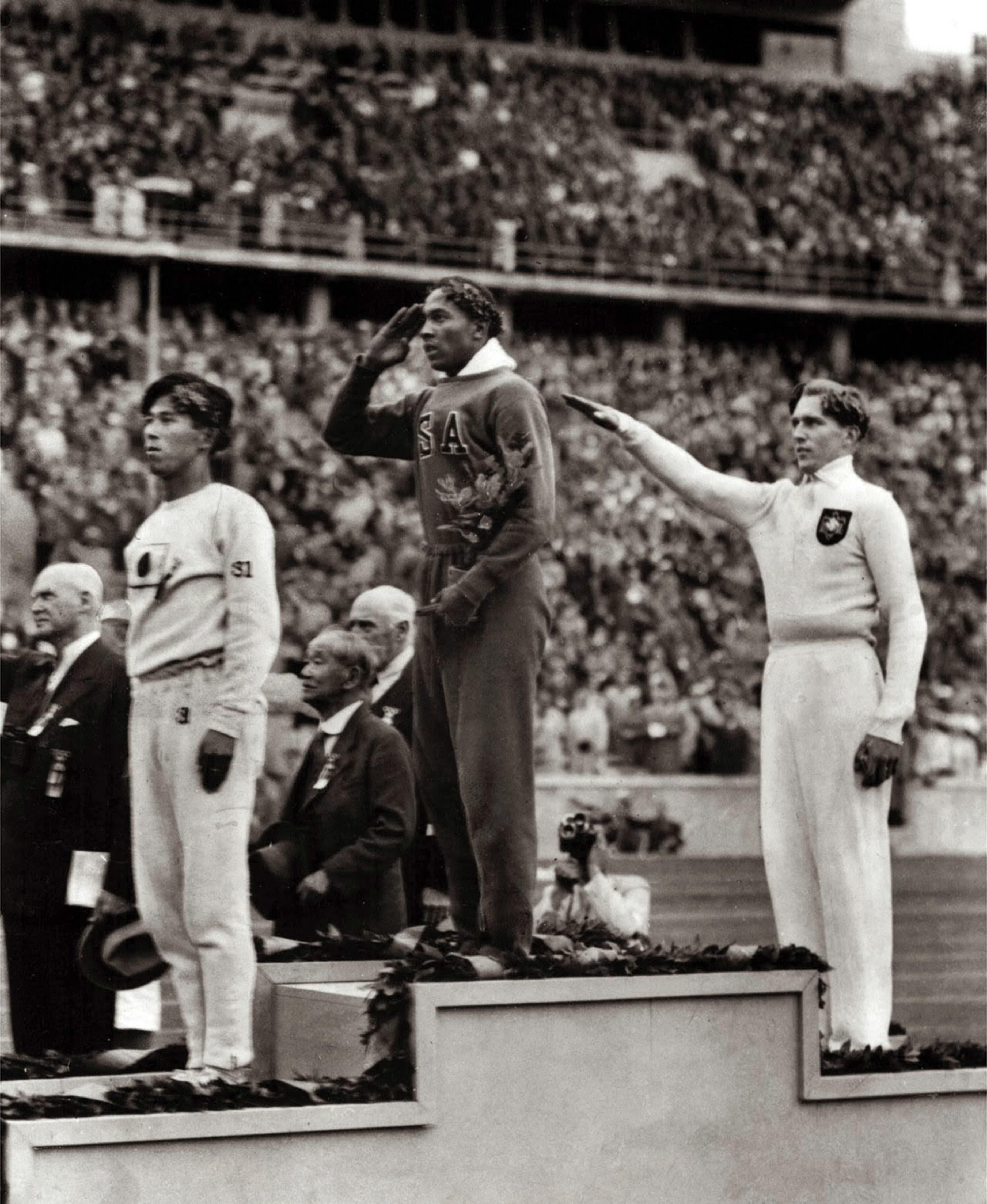
With the rise of the Nazi party in Germany just three years earlier, the 1936 Olympic Games in Berlin were inevitably injected with a heavy dose of politics. Adolf Hitler eagerly anticipated the chance for his regime to play host and broadcast his ideology to audiences worldwide.
However, his dreams of a powerful showing of the strength and superiority of the Aryan race were trounced by an African-American athlete named Jesse Owens. The 23-year-old runner had been burning up the track and field events in the U.S. for years and already held three world records. At the 1936 Olympics, he became the first American ever to win four gold medals: the 100-meter dash, the long jump (beating German champion Lutz Long), the 200-meter dash (setting an Olympic record), and the 4×100 relay race. This photo shows Owens proudly saluting his country while Lutz salutes the Nazi party below him.
8
This photo of Mount Rushmore being carved in 1935
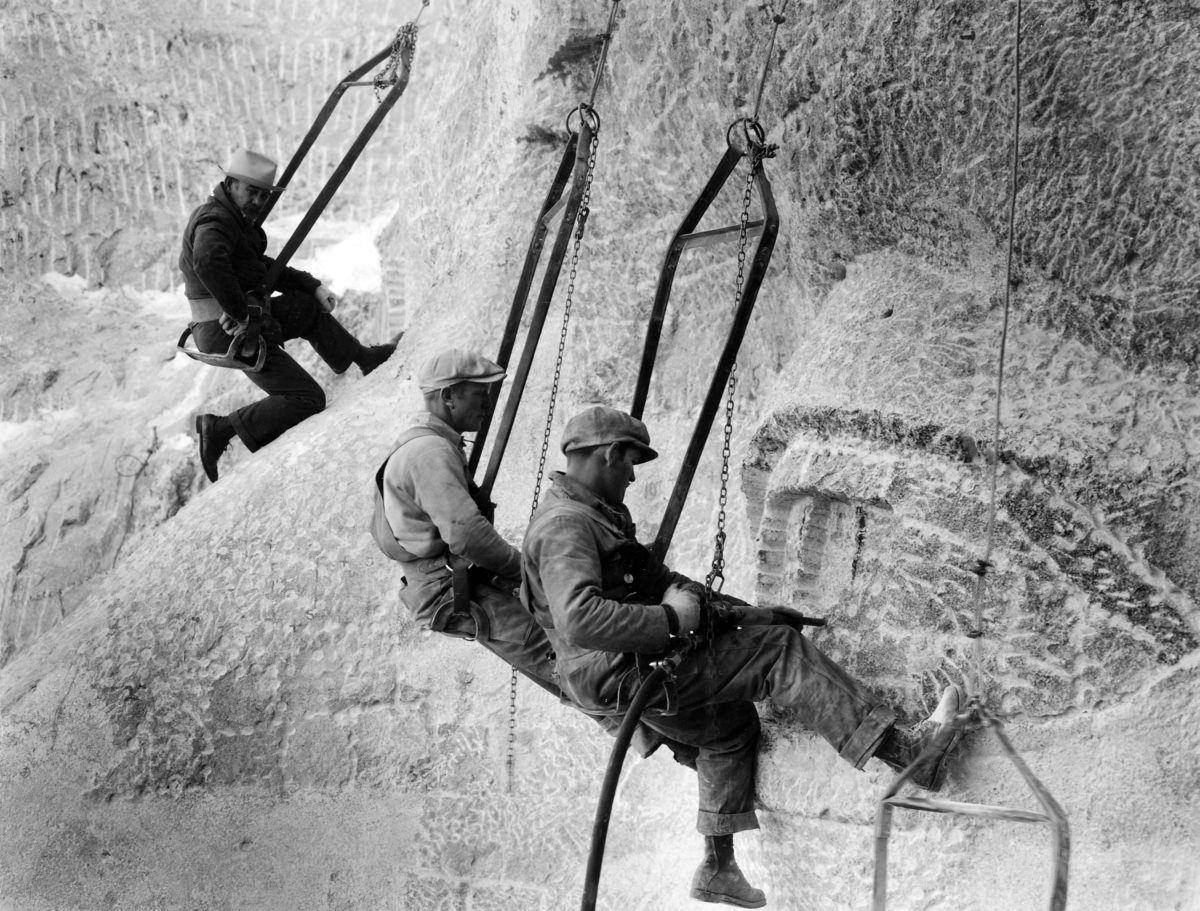
After 14 years of work, the Mount Rushmore monument was completed in 1941. Although 90 percent of the carving was done using dynamite, the final surface was finessed by drillers and carvers. Each day, the workers—pictured here in 1935—would be lowered over the front of the 500-foot face of the mountain on steel harnessed chairs to shape and remove the granite by hand and later smooth the surface, according to the National Park Service. Some 400 workers removed 450,000 tons of rock, which still remains at the foot of the mountain. Although the work was extremely dangerous, there were no lives lost in the creation of the monument.
9
This photo of a real Rosie the Riveter in 1943

During World War II, Rosie the Riveter became an iconic image of women entering the defense industry to replace the men who had been deployed. Their efforts were extremely critical to the success of the war effort, and "by 1945 nearly one out of every four married women worked outside the home," according to the History Channel. These women filled positions across factories and shipyards nationwide, producing the war supplies sent to those on the front lines.
Although the image of Rosie was based on a munitions worker, it was the aviation industry that saw the largest increase in female workers, including this real-life "Rosie" working on an A-31 Vengeance bomber in Nashville in 1943.
10
This photo of a Japanese-American internment camp in the 1940s
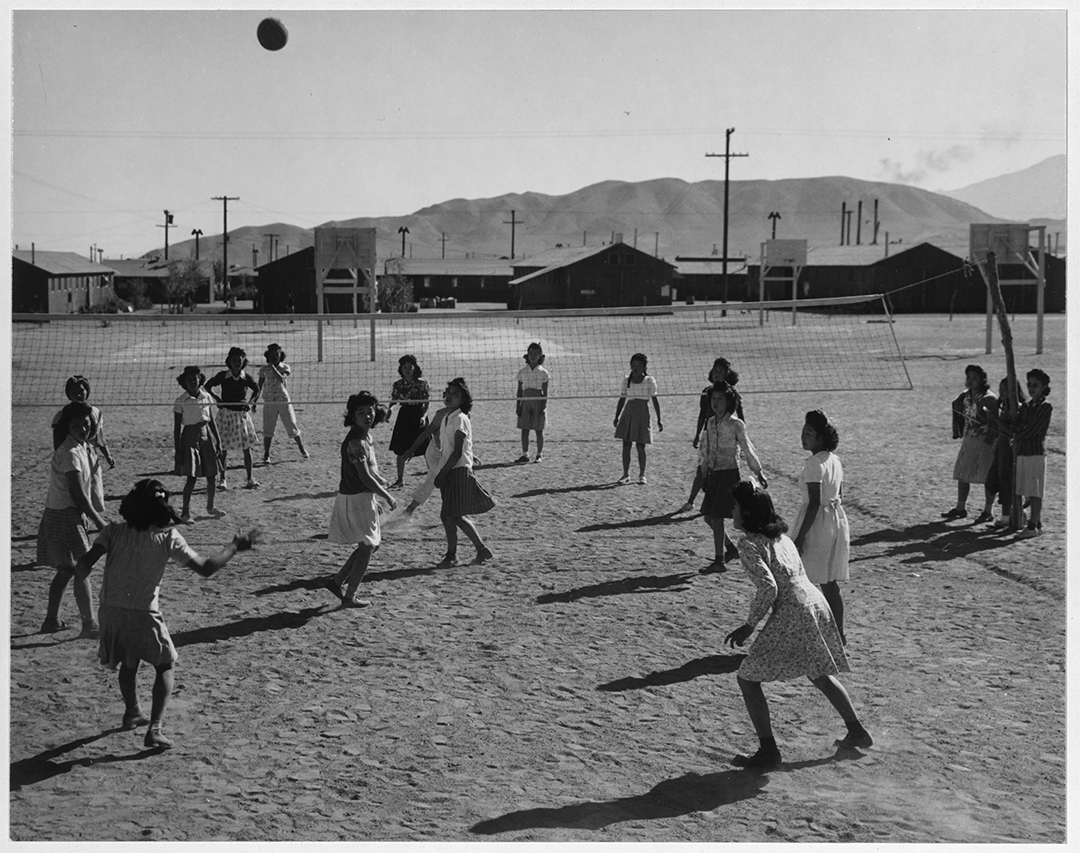
Photographer Ansel Adams may best be known for his gorgeously rich landscapes, but in 1943 he turned his eye to a pressing injustice: the Manzanar War Relocation Center in California, where Japanese-Americans were confined during World War II. Adams felt it was important to document and broadcast these citizens' lives after they had been stripped of their homes and professions. This image of a school recess is just one of the photos Adams captured that showcase the strong community and resolve of those held captive.
11
This photo of Dorothy Counts at a recently desegregated school in 1954

Following the 1954 Supreme Court ruling in Brown v. Board of Education, in which the segregation of public schools was found unconstitutional, African-American students began to apply for enrollment at formerly all-white high schools. Fifteen-year-old Dorothy Counts was the first African-American student to attend Harding High in North Carolina, but after four days of intense taunts, assaults, and threats of violence, she withdrew for her safety.
In a 2016 interview with HuffPost, Counts recalled adults bearing silent witness to the harassment and police telling her family they couldn't guarantee her safety. Though her tenure at Harding High was brief, her fight for desegregation continued. Now in her 70s, Counts has remained vocal in the fight against racism in the classroom. "I want to make sure with what I do in life, those kinds of things don't happen to other children," she said.
12
This photo of children in East and West Berlin in the middle of the 20th century

Following the defeat of Germany in World War II, the country's government was split between the communist German Democratic Republic (GDR or East Germany), occupied by the Soviet Union, and West Germany, occupied by the U.S., Great Britain, and France. The fate of German citizens would rely entirely on where they lived when this agreement was struck in 1945. Then, in 1961, the GDR constructed the Berlin Wall between East and West Germany in a matter of two weeks as a way to control the mass numbers of citizens who had been defecting from east to west, according to the History Channel.
Until the fall of the wall in November 1989, anyone wishing to travel east to west had to pass through checkpoints, though citizens were rarely able to do so. This meant that many families and friends found themselves quite suddenly torn apart in 1961, a heartbreaking hardship they'd have to endure for the 28 years the wall stood firm.
13
This photo of NASA's Melba Roy in the 1960s

The 2017 film Hidden Figures earned accolades for highlighting the vital contributions of the African-American women who helped make the Space Race of the '50s and '60s successful for the U.S. And althoughArmstrong, Buzz Aldrin, and John Glenn are household names, the tireless work of mathematicians known as "computers," such as Katherine Johnson, who was featured in the film, and Melba Roy, pictured here, made their missions possible. Roy joined NASA in 1959 with a masters in mathematics. According to NASA, "Roy's computations helped produce the orbital element timetables by which millions could view the [Echo] satellite from Earth as it passed overhead." And for more on women like Johnson and Roy, here are the 25 Most Inspiring Leading Ladies in Movie History.
To discover more amazing secrets about living your best life, click here to follow us on Instagram!














